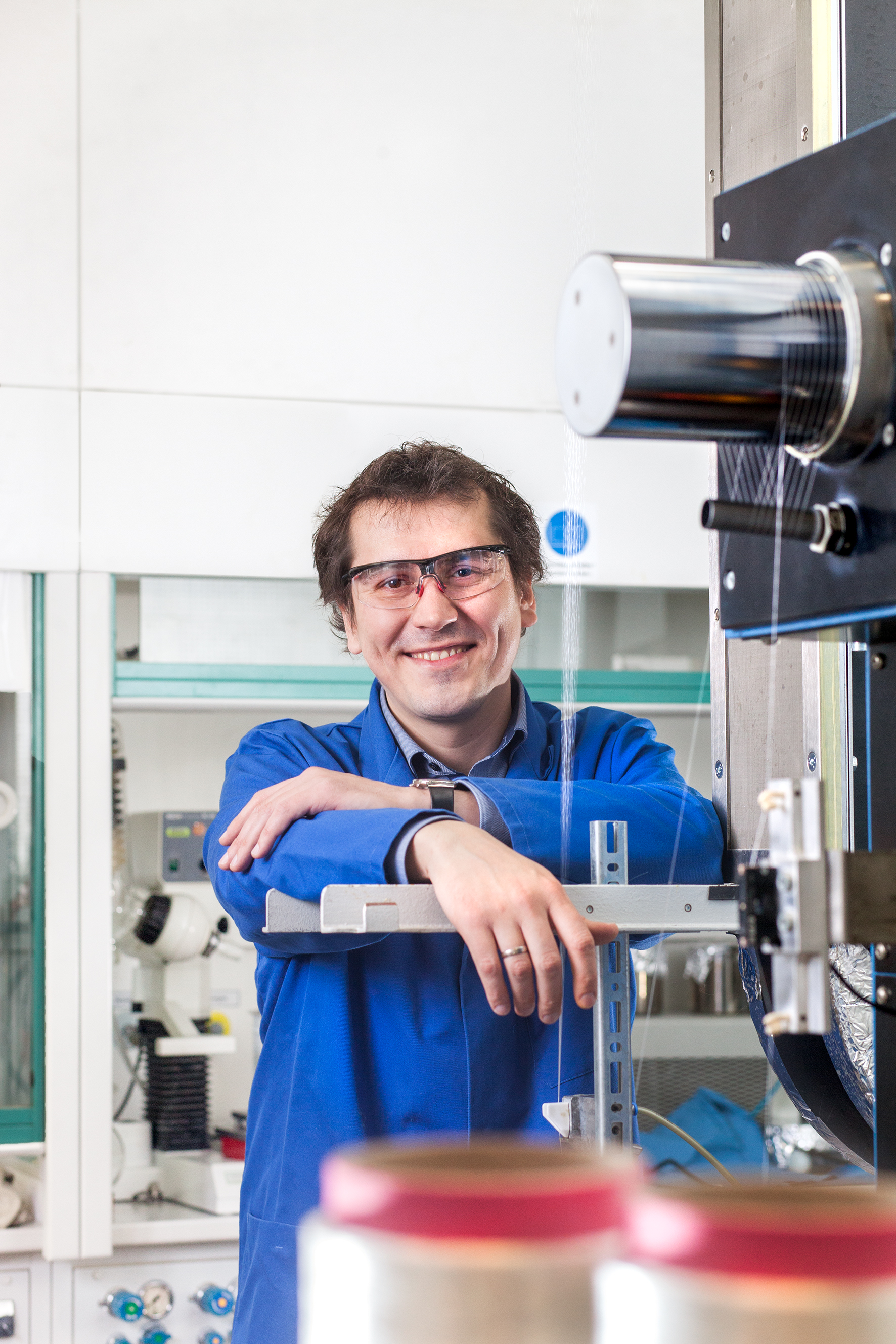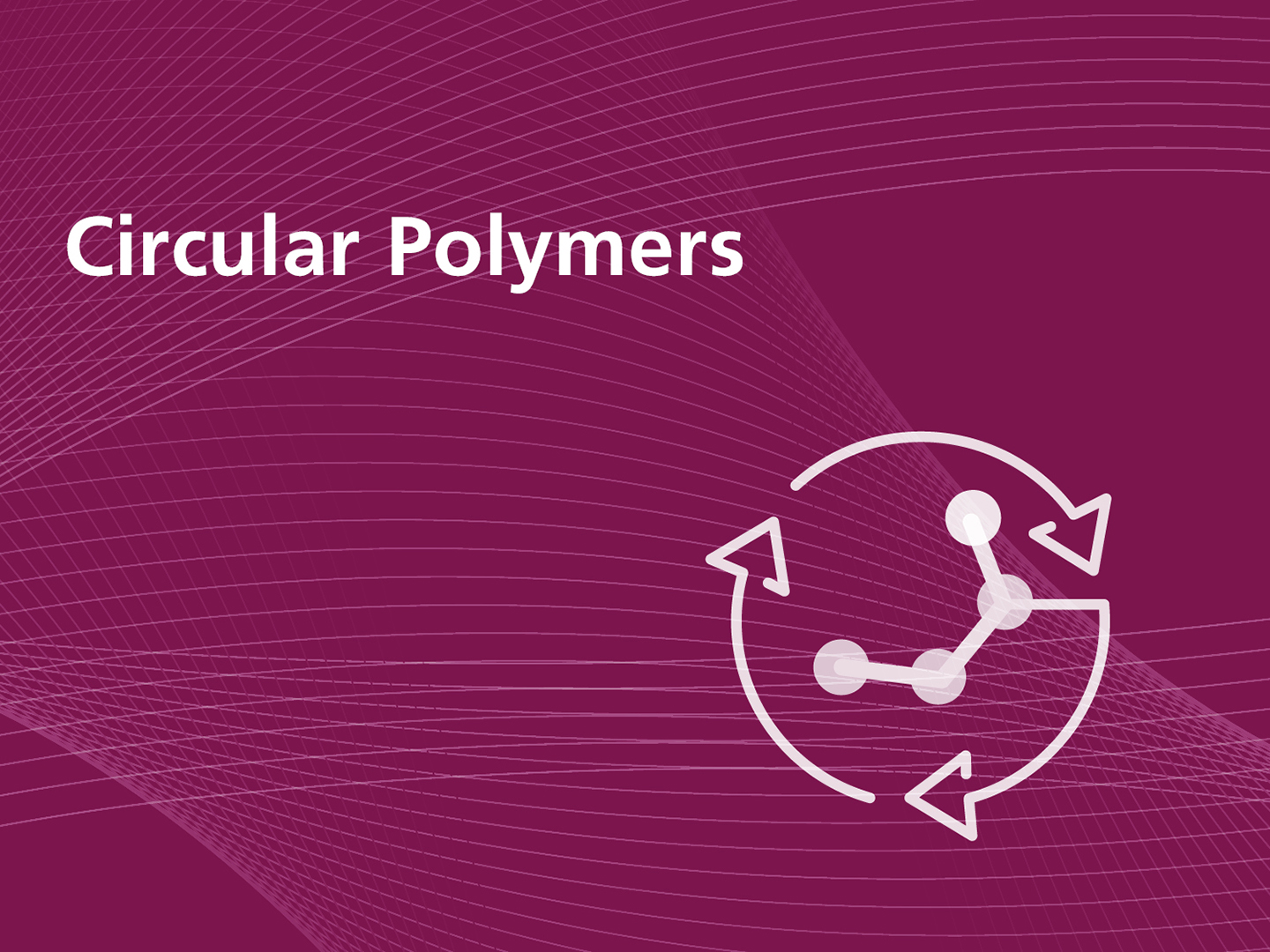Dr. Evgueni Tarkhanov works in the Research Department "Circular Polymers". He was involved in the co-development of the innovative scPLA filaments. Read more about it here and learn about his highlights around Fraunhofer CCPE.

Which research topics are you working on at Fraunhofer CCPE? What creative ideas are you currently involved in in your research area?
Within the cluster, we are looking for solutions that contribute to the realization of the recyclability of materials and products in the most general sense. The multifaceted research topics here address numerous challenges that occur in this context and address both materials and systematic recycling solutions as well as realizable business models.
Especially in our research area, the focus is on the development of novel recyclable materials as well as the possibilities to influence the properties of already established material systems by additivation, e.g. with regard to degradability or long-term stabilization. Finally, both aspects can contribute to sustainability, depending on the application.
Do you have a concrete project example respectively why is this interesting for the industry/society?
In cross-institutional cooperation with Fraunhofer ICT, we are developing a PLA-based biobased monomaterial composite with improved thermo-mechanical performance, which is realized by a high-melting stereocomplex crystal structure of the fibers. The possibility to produce these innovative scPLA filaments is certainly one of our unique selling points in the research landscape so far and holds great potential to expand the application areas of this sustainable material into the technical segment.
Especially in the lightweight segment, the approach could enable recyclable components based on renewable raw materials that have a very attractive property profile and would also be easy to recycle due to the chemical homogeneity.
What is your highlight from almost 5 years of Fraunhofer CCPE?
My best memory is of a huge task that we were able to successfully master. It was a sampling order for a large company that wanted to investigate the thermoformability of our monomaterial in organo-sheet form on fully automated industrial equipment, an appearance on a very big stage from the point of view of an application-oriented researcher.
It became essential to keep to very strict time and dimensional specifications, almost to the tenth of a millimeter, so that the organic sheets would fit into the customer's molds. Everything had to be exactly correct in every detail, from the implementation of the fiber manufacturing process and the design of the fabric structure to the consolidation of the fabrics into more than 40 organic sheet patterns. To stay within the time frame, there was no room for possible repetition. Everything simply had to fit right the first time. Rarely in my life was I forced to release so much adrenaline when turning an order into reality.
Seeing how our material was ultimately processed on large-scale industrial plants and was able to prove itself made me very proud of the performance of everyone involved. A prime example of successful cross-institute cooperation.
What does your work involve?
I work in the Fiber Technology department at the Fraunhofer IAP in Potsdam. Our main competence includes developing spinning processes for novel materials and getting to the bottom of thread formation by analyzing process-dependent structure-property relationships. My focus is especially on the melt spinning process.
Part of my daily work is, of course, to respond directly to requests from companies in order to support them in the realization of their goals, but also to develop new project ideas and to implement them with partners from industry and research. Specialized events like ADD-ITC or Dornbirn GFC can be very supportive to follow the trends and developments in the textile industry and to get to know potential project partners.
In addition to the conception and coordination of project work, experimental practice is also incredibly valuable for the successful implementation of project ideas. For this reason, I also conduct our spinning trials directly on site in order to identify possible optimization approaches at close range and to correctly assess the yarn formation performance of the material under investigation. With increasing experience directly at the spinning plant, the necessary feeling develops for how to influence the yarn formation on the process side in order to find the rarely obvious spinnability window of a novel spinning material. This creates the basis for ultimately being able to demonstrate the full potential of a material with the appropriate know-how.
What fascinates you about your work at Fraunhofer CCPE?
On the one hand, I am of course fascinated by the challenging research topics, which are very complex and highly relevant to society. But I also appreciate the close and trusting cooperation within our cluster. It is a great feeling to be part of our well-functioning and highly competent team.
I hope that this cooperation can continue for many years to come and that we as a cluster can make a valuable contribution by continuing to identify innovative options for solving acute social problems.
